The SORCE mission began collecting TSI data in February 2003.
I was curious to see if the variations in the TSI had begun to rise yet, perhaps indicating a start to cycle 24. Visual inspection of the SORCE TSI plot showed just the opposite - variations continue to decline in amplitude. If cycle 24 has started, there are no signs of it in these data.
We can be a bit more quantitative if we examine, instead, a plot of TSI variance with time. I produced such a plot using the daily average TSI data provided on the SORCE web site.
The red data are variance values calculated at two-week intervals. The blue curve is the smoothed data calculated in the same way as smoothed sunspot numbers (basically a 12-month running average). Note, the vertical axis is plotted on a logarithmic scale.
To compare the recent TSI variance trend with the previous sunspot minimum, I looked up the ACRIM2 daily average TSI data at: http://www.acrim.com/Data%20Products.htm.
These data are plotted on the same scale as the SORCE data. The smoothed data show a minimum TSI variance near the beginning of 1996, some months before sunspot minimum (October 1996). Notice that the minimum value for the variance during the 1996 minimum was about an order of magnitude larger than the present TSI variance.
The SORCE web site quotes long-term 1-sigma precision (relative accuracy) of their TSI measurements to be 0.001%/yr. This corresponds to a variance of 2 ´ 10-4 W2 m-4. However, the precision should be considerably better than this on the 2-week timescale that I selected for calculating the variance. Unfortunately, I have not been able to locate a quote for the estimated precision of the ACRIM2 measurements. It would be worthwhile to know if the minimum TSI variance of the previous sunspot minimum measured by ACRIM2needs to be corrected for the instrumental precision.
Guillermo Gonzalez writes on his background:
I'm an astronomer, though my present title is associate professor of physics at Grove City College, PA. I wrote a paper (in Solar Physics) with Ken Schatten back in 1987 on predicting the next solar maximum with geomagnetic indices. That was my only contribution on anything having to do with the Sun-Earth connection, but I also got a letter published in Physics Today in 1997 wherein I urged readers to take the Sun-Earth climate connection more seriously.UPDATE: I received a suggestion for an overlay via email from Terry Dunleavy and I've worked one up below. This was done graphically. I took great care to get the two lined up correctly. Note however that the datasets span different lengths of time, as you can note on the two timescales I've included on the combined graph. The vertical scale matches exactly between graphs though.
These days most of my research is on extrasolar planets.
UPDATE2: Here is another graphical comparison of the two TSI variance graphs, scaled to have a matching X-axis and appropriately aligned side by side.
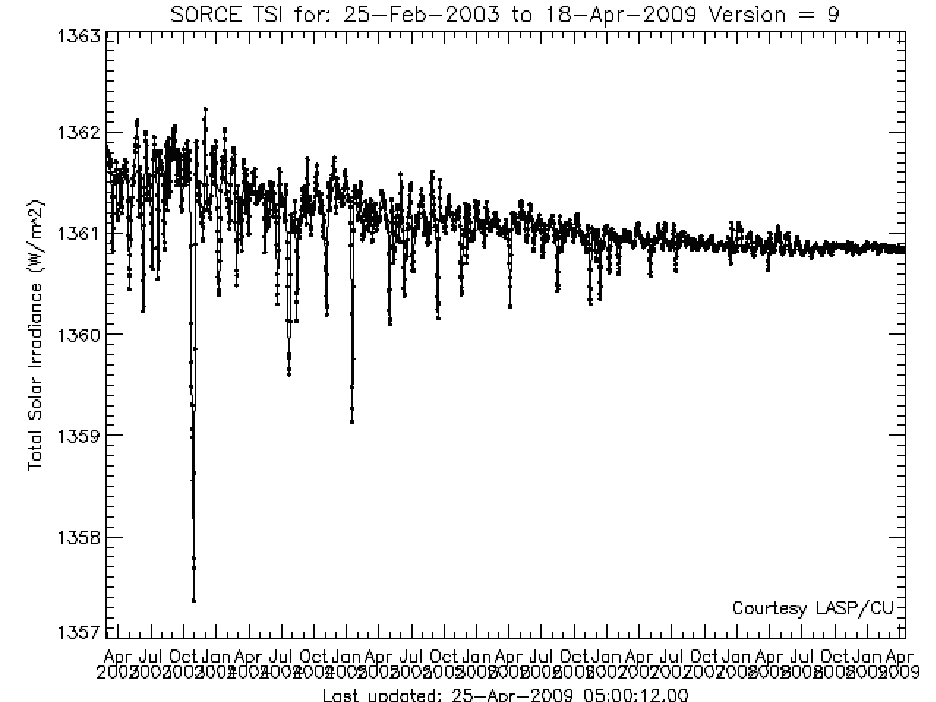
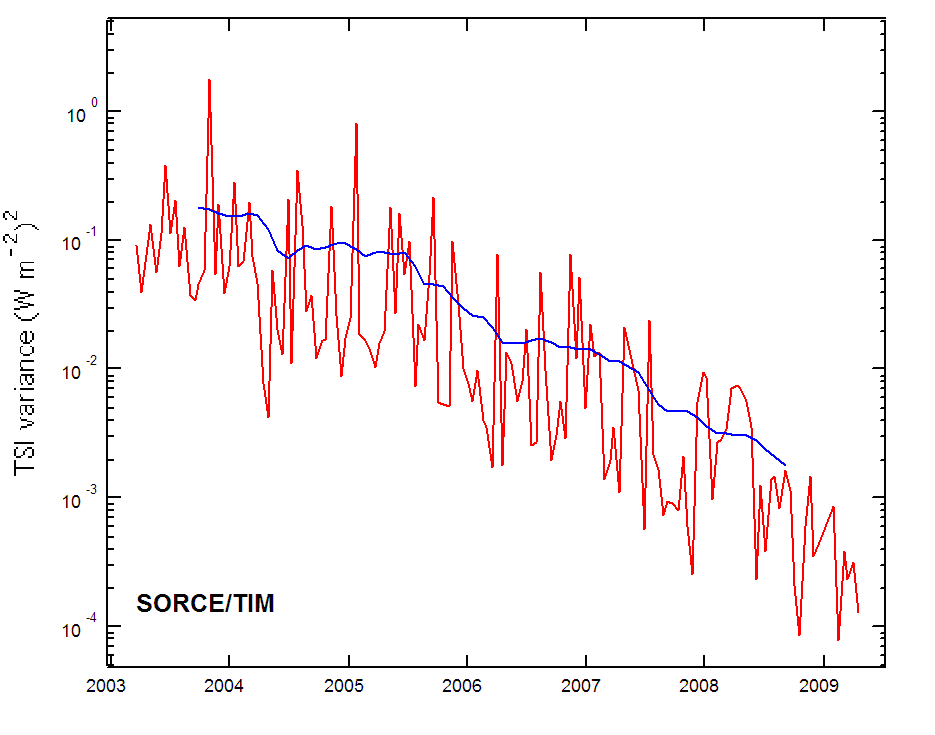
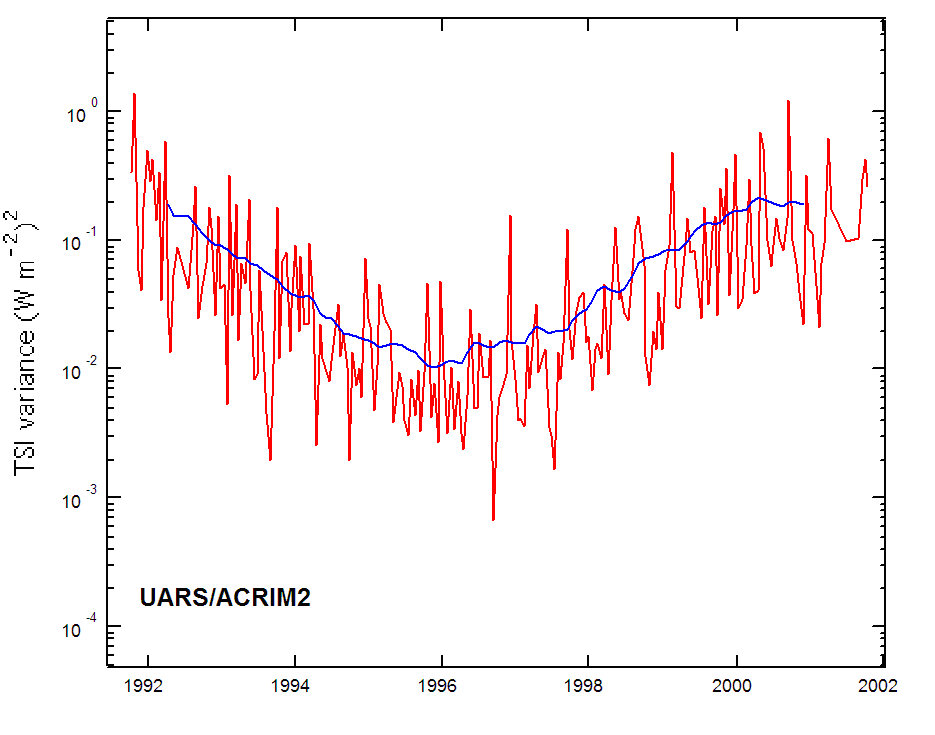
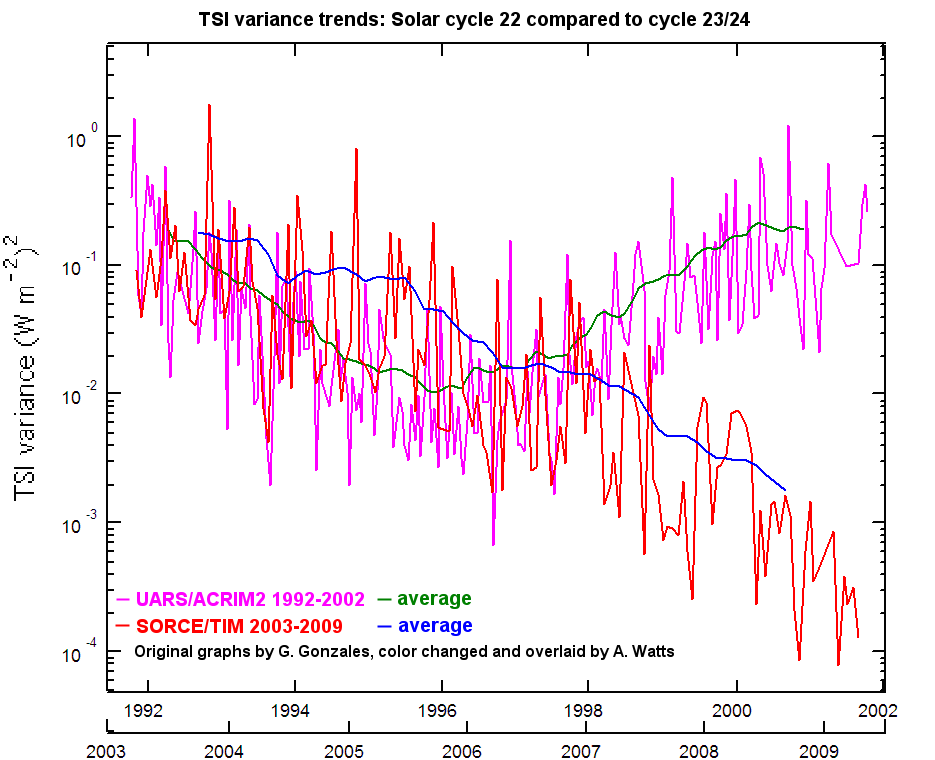
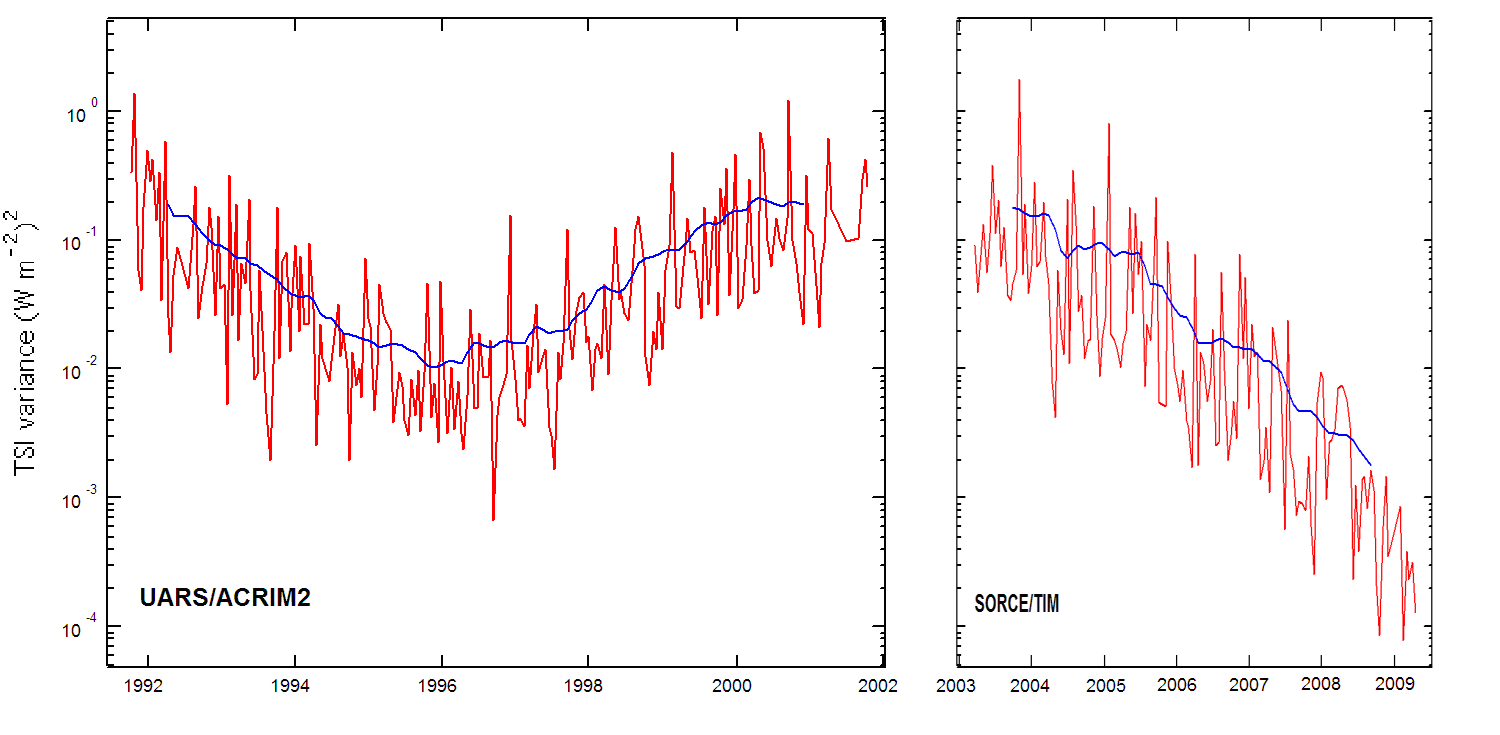



Thanks for the report on TSI.
When I went to the SORCE website a few weeks ago to check the TSI data and compare it to prior VIRGO satellite data, I found a major gap in the baseline between the VIRGO and SORCE TIM instrument data.
Then I came across this note on the SORCE website:
“Special Note on TIM (Total Irradiance Monitor) TSI Data
“"The TIM measures TSI values 4.7 W/m2 lower than the VIRGO and 5.1 W/m2 lower than ACRIM III."”
[Link]
WOW! That's a major difference and makes me question all prior non-SORCE/TIM data and their use in global warming models. That difference is much larger than the 1 W/m2 variance between the solar cycles as measured by the older VIRGO TSI instruments.
If you go to the VIRGO site there is a page long, mind numbing, description of how they cobblel together data from different instruments using mathematical hammers to achieve the "final" TSI .. ... Level 0 to Level 1, then Level 1 to Level 1.8, and finally from Level 1.8 to Level 2.0. [Link]
Clearly TIM is simpler in design, more accurate, and provides direct TSI measurement.
A meeting in May 16, 2006 reviewed the different TSI instruments, but did not come to a conclusion rating one over the other. Open admittance that prior measurements are not as accurate as portrayed is a very sensitive scientific/political issue and silence appears safer than open debate.
TIM is the instrument of choice for future NASA flights.
I received this note from
Greg Kopp -TIM Instrument Scientist Laboratory for Atmospheric and Space Physics
“We have been working with the TSI community on resolving these differences, starting with a NASA-organized community workshop at NIST a couple of years ago. Since then, we have built a new facility to calibrate TSI radiometers against a NIST-calibrated cryogenic radiometer prior to flight, and have used this facility to validate the performance of the next TIM, which will launch in early 2010 on
NASA's Glory mission. Prior to the Glory/TIM, no flight TSI instrument has been validated end-to-end for irradiance under flight-like operating conditions (my emphasis)”